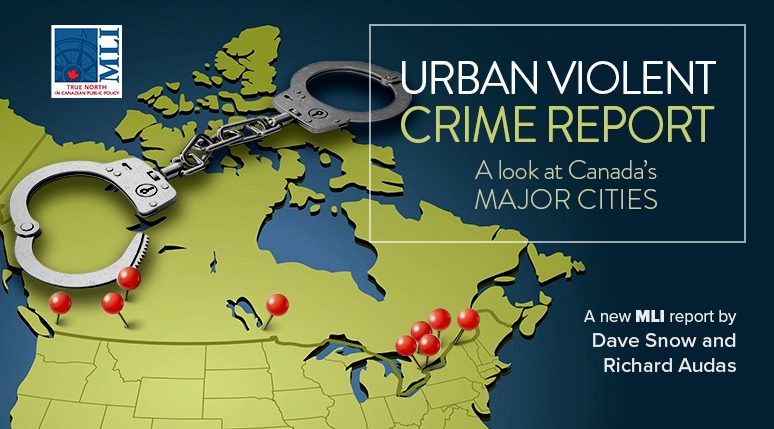By Dave Snow and Richard Audas
September 17, 2024
Executive Summary
In recent years there has been a surge in violent crime across Canada as a whole. However, not much is known about short- and long-term violent crime trends in specific urban areas. Because most Canadians interact with crime in their local communities, there needs to be more focus on violent crime at the local level.
In this report, we analyze 10 years of police-reported violent crime data (2014–2023) on homicide, aggravated assault, sexual assault, and robbery in order to explore violent crime trends in nine major cities that comprise one-third of the Canadian population: Vancouver, Calgary, Edmonton, Winnipeg, Peel Region, Toronto, York Region, Ottawa, and Montreal.
We draw three main conclusions about violent crime in Canadian cities. First, violent crime rates for certain crimes – most notably sexual assault and robbery – are rising nearly everywhere. In particular, sexual assault rates are consistently trending upward over the long- and short-term, with increases in every major city except Ottawa. Trends for homicide and aggravated assault are more mixed and depend on the city and the time period.
Second, general trends can mask striking differences between cities. For instance, Edmonton and especially Winnipeg have crime rates that far exceed those of other cities. By contrast, violent crime is much lower in York, Peel, and Ottawa. Generally speaking, crime in Canada’s major cities follows a westward tilt: Western cities (and Toronto) typically experience the highest rates of violent crime.
Third, the cities in which violent crime is increasing are not necessarily those that have the highest overall violent crime rates. York, Montreal, and Winnipeg have experienced the most consistent growth in violent crime rates over the last decade, yet these cities share little in common in their crime rates: York is low and Winnipeg high. Edmonton, meanwhile, has experienced increases in some violent crimes and decreases in others despite having high rates overall.
Our report also documents the challenges of collecting, verifying, and analyzing urban violent crime data in Canada. The publication of consistent, transparent, and timely crime data is essential to a well-performing justice system. However, through conversations with police services, we discovered a general lack of coordination and consistency in reporting practices, even among cities submitting data to shared databases with supposedly uniform reporting requirements.
This should not be happening in Canada where we have a single Criminal Code whose provisions are uniform across the country. To that end, this report makes a number of recommendations to improve the quality and comparability of violent crime data. These include harmonizing reporting methods, clearly specifying variation in reporting methods where they are unavoidable, and ensuring uniform definitions are used for all violent crime data regardless of the city.
Finally, this report demonstrates that Canadian cities need to do a better job of collaborating and sharing quarterly crime data in a centralized repository. Insofar as most police services are already collecting and reporting on their quarterly data, other Canadian cities should also try to contribute violent crime data to a shared repository that can report such data in a timely, transparent, and accessible manner.
We hope this report provides the impetus for more and better data-sharing among Canadian cities. The legitimacy of our criminal justice system depends on it.
Read the full paper here:







